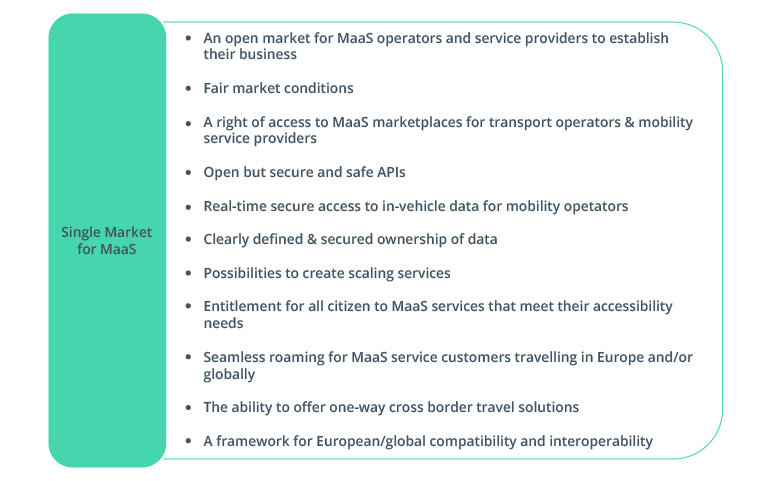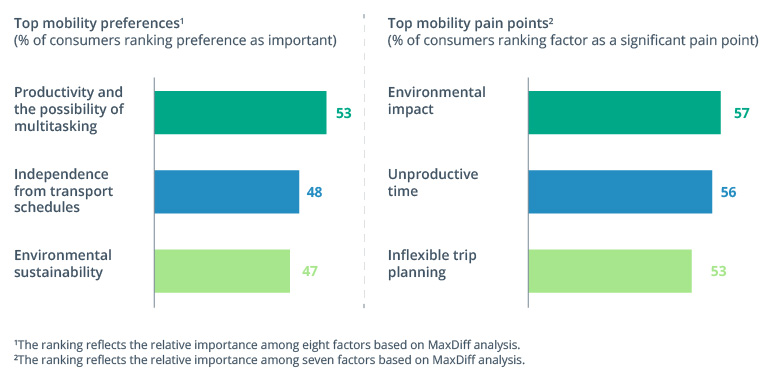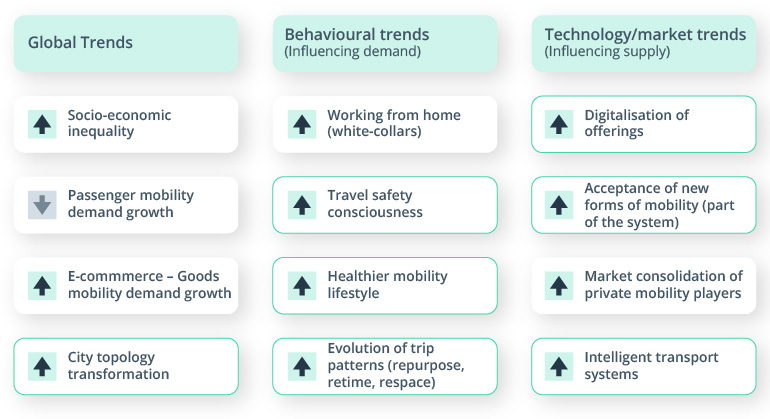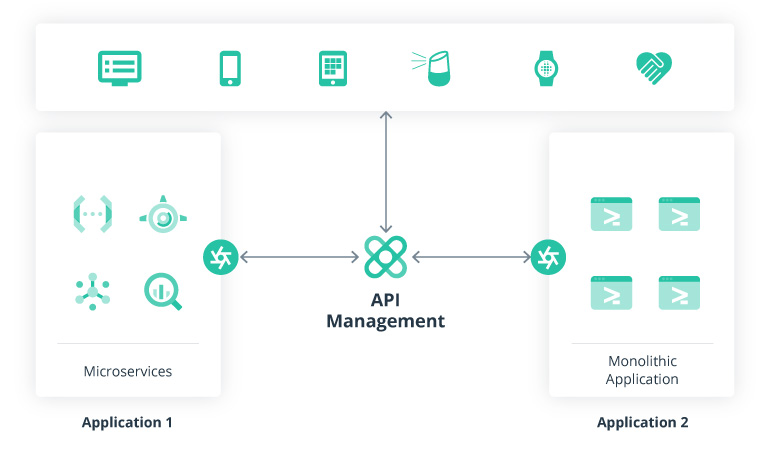In 1807, a group of enterprising Welsh folks paid the British Parliament £20 for the right to run the world’s first fee-based horse-drawn public tram line — the Swansea and Mumbles Railway.
In the 2020s, a twenty won’t be enough to fund a new route. But it can take you on a several-hour e-scooter ride, to a nice coastal town by commuter train, or home in a cab after a long night around town.
We have no lack of digital mobility services. Still, our daily journeys can sometimes feel as cumbersome as traveling by horse-drawn carriage.
Suppose you miss an update about construction on your regular line. Then you struggle to buy the correct fare for the replacement bus. It leaves without you. Uber asks for a surcharge because they can. Then you nearly get run over by a whizzing e-scooter as you decide to walk to your destination.
A day like that makes anyone wonder: Where is all the glorified MaaS (mobility as a service) technology? And why is no one getting a finer grip on multimodal urban transportation planning? Perhaps I should get into this line of business?
The good news is that the role of MaaS orchestrator is vacant in most markets. The bad news is that if you decide to fill it, you’ll be in for a bumpy ride.
What is MaaS and what is it not?
MaaS stands for mobility as a service — a multimodal transportation solution offering on-demand access to different transportation services via a single interface.
Essentially, a MaaS operator is an aggregator offering à la carte or packaged access to different transportation options: public transportation, ridesharing, bikesharing, carsharing, or any combination of these to navigate the urban jungle.
A customer-delighting urban mobility as a service app also takes away the guessing game of figuring out the correct fare or purchasing multiple passes (which is especially frustrating for visitors), handles payments, and builds effective navigation in tune with a city’s transportation planning priorities.
In short, most MaaS apps include:
- A navigation planning module powered by location-based services
- A set of APIs connecting the app with other transportation services
- A traveler information system for journey updates
- Fare management and ticketing functionality
- Payment processing functionality
Sounds simple. And in theory, it is. But in practice, performing multimodal transportation planning is harder than solving a one-color puzzle.
First, transportation ecosystems have many players — government agencies, public transportation authorities, carsharing companies, ride-hailers, micro-mobility providers, etc. Some days they are a source of joy. Other days they are the reason for your grievances.
For long enough, transportation market players have pursued the same and competing priorities. Private and public transportation providers operate in silos. Government agencies lack the vision and technological maturity to evolve at the same pace as private players.
Due to that, we now have many examples of not-so-great mobility as a service experiences:
- Endless tensions between private companies (ride-hailing services, on-demand rental services, asset sharing companies) and city authorities on road priority, parking availability, dedicated lanes, etc. For instance, San Franscisco authorities are suing the Turo carsharing startup for not having airport parking permits.
- Haphazard go-to-market approaches and cut-throat competition among new mobility players to secure market share faster. For example, Bolt is aggressively competing on pricing for e-scooter sharing in Germany in hopes to get more users into their transportation platform, which also offers ridehailing, e-bikes, and food delivery services.
- Domination of private transportation companies in cities with poor public transport infrastructure. This leads to heavier road traffic and increased air pollution. As UC Berkeley research suggests, ride-hailing displaces transit ridership and increases vehicle miles traveled by cars. According to the study, if affordable hailing options were not available, passengers would use alternative public transport.
Most markets lack a MaaS orchestrator/integrator. But it can be a very lucrative position to assume
Urban mobility software development
Why mobility as a service companies should think at the ecosystem level
Everyone wants to become a “platform” business.
Operating a platform lets you tap into economies of scale and progressively generate value from both owned assets (product/services) and borrowed assets (open APIs, marketplaces, aggregation services).
Platformization is what many urban mobility companies pursue. Think Uber, Bolt, or automotive companies venturing into connected car sharing.
But if you are to take on the cross-market MaaS orchestrator role or provide such technology to other private and public entities, you’ll have to go one layer of abstraction higher and think at the ecosystem level.
Whoever takes the lead in orchestrating urban mobility must ensure that public and private operators in the fragmented mobility ecosystem work together effectively. The orchestrator must also understand what consumers truly want from their transportation system.
Without such a general sense of direction, establishing a MaaS offering is like building a house from the roof down.
You can create a user-friendly and engaging app interface that enables people to build a journey using just about any means of transportation: tram, metro, shared bike, free-floating car, hitched helicopter, soon-to-be-available teleport.
But your product will fail to scale on the market if you are only marginally better than Google Maps or fragmented public transportation apps (at least they let you pay for your fare).
That is why organizations like the MaaS Alliance are advocating for progressive creation of a single MaaS market.
Building blocks of a single MaaS market

Source: MaaS Alliance — Guidelines & Recommendations to Create the foundations of a thriving MaaS ecosystem
In many cities, public multimodal urban transport already operates based on similar principles. However, private players are often excluded and/or operate in silos.
Mobility as a service integrators can take on the challenging role (that promises high ROI) of engaging different market participants and uniting them into a single value-generating ecosystem where everyone wins.
- Authorities could reduce public transport operating costs, improve traffic management, decongest roads, and make transportation more sustainable to hit those fretted emissions targets.
- Transport infrastructure providers could receive better guidance and financial support for implementing required infrastructure, expand networks, optimize pricing, and secure more profits.
- Public transport operators could be empowered to provide flexible multimodal urban transportation services. They could launch joint initiatives with private players, increase ridership, and optimize spending by adjusting transportation routes and planning.
- Private mobility service providers could boost market presence and usage through integration with city-wide transportation networks. They could also extend services to rural and suburban regions with support from public transport authorities, partner with businesses on last-mile service, grow their market presence organically, and improve customer satisfaction rates.
- The automotive sector is also gaining the capability to launch and integrate new offerings for the transportation market such as on-demand rentals, flexible leases, fleet car sharing, and shared consignment. Moreover, through proactive cooperation with authorities, the automotive sector could receive the support and infrastructure needed for emerging use cases (EVs, AVs, platooning, etc.).
A MaaS integrator sitting at the heart of the above operations would connect all the above players into a tight ecosystem. Then it could generate extra value through:
- Transportation big data brokering. Provide authorities and transport service providers with rich data and insights about travel dynamics, frequent travel patterns, and overall transport demand.
- The API economy by establishing new sales channels for providers and capitalizing on emerging business opportunities at a marginal cost.
- Value-added technology offerings such as emerging AI use cases in transportation like predictive route planning, smart parking management, commercial fleet management, and enhanced last-mile delivery planning.
And effective MaaS isn’t just good for business — it’s good for customers too.
Customers’ priorities and preferences in mobility strongly align with what effective mobility as a service products can offer.
Productivity and independence are key mobility concerns for consumers
Source: BCG — Solving the Mobility Challenge in Megacities
Learn more about the development of an IoT-enabled mobility as a service solution for fast and cost-efficient journeys
What stands in the way of scaled mobility as a service transportation solutions?
The above scenario sounds playbook perfect.
But like preschoolers, transportation companies don’t like the concept that “sharing is caring.”
It’s hard to get all transportation players to agree on a joint MaaS market framework such as the one proposed by the MaaS Alliance.
But even if there’s buy-in, other issues stand in the way of efficient multimodal urban transport, namely:
- Car-centric transportation planning. MaaS will not have an impact if a city is car-oriented (and heavily lobbied by automakers). At the current rate of population growth, car-centric thinking is not sustainable in the long term. Plus, as consumer attitudes towards car ownership are changing, the era of peak car may be approaching fast.
- Lack of connectivity infrastructure. Not all cities have sufficient levels of connectivity and the ability to collect and process data for individual transportation functions such as transportation management. Data collection, management, and exchange remains siloed and fragmented among transportation service providers. Likewise, connected roadside infrastructure is scarce.
- Technology issues. At present, there’s no universal framework for developing an integrated mobility ecosystem. Likewise, reference architectures err on the side of aspirational rather than realistic. Market participants have no shared standard data exchanges or integrations.
Arguably, the biggest stakes are on improving MaaS technology solutions. But pure technology cannot save us from bad choices. It needs to be backed by a wider strategy.
Learn more about the development of cloud transportation software for routing and smart city planning
How to build a tech foundation for a MaaS ecosystem
Becoming a mobility as a service operator (not a standalone mobility service) isn’t a leisurely drive — it’s an off-road drift.
Sure, there are institutional, operational, and technical roadblocks. But the market conditions give you the green light.
Realizing the MaaS promise: MaaS vs Covid-19
Source: MaaS Alliance — MaaS Market Playbook
Customers don’t want more transportation options; they want options that are:
- More flexible
- Safer
- Greener
Regulators and authorities are looking for new strategies to regulate CO2 transport emissions. Many realize that without joint action with private companies, these needs will be impossible to meet.
Overall, the transportation industry is digitizing fast, from fare digitization to the rollout of intelligent transportation systems.
So if you plan to take the driver’s seat and help shape the new vector of urban transportation planning, here’s how you can find your technological footing.
Promote Shared Data Standards
Multimodal transportation solutions require standardized, non-proprietary, and digital datasets. This is not optional.
Authorities are already onto this. Popular public transit data exchange standards include:
- NeTEx standard for exchanging timetable data
- General transit feed specification (GTFS) standard
- GTFS Realtime — a Google-developed extension of GTFS
- Transport operator mobility as a service provider (TOMP) standard (Netherlands)
- Advanced transportation controller (ATC) API standard
These can be a good starting point for creating a high-level data governance framework for your product.
But the wrinkle is that private mobility service providers are often reluctant to share customer data. Yet many can be persuaded with a promise of higher demand generation, access to new routes and markets, and joint operational models.
At the same time, many cities are open to collaborating with private MaaS technology companies to create joint standards and improve data availability. Lisbon, for example, is developing a shared Mobility Catalog of third-party tools for governing the city’s transportation and ensuring accurate information delivery by journey planners and transportation apps. Stepping it at this stage could be a win for both the city and the private provider.
For instance, we recently helped a German transportation company standardize data formats and build smooth data pipelines and routing for supplying real-time transit data to other companies. We also helped them launch several mobility as a service platform features.
Learn more about strategic and technological methods for better urban planning using big data and transportation
Develop an API Strategy
Having data stored and available in the right format is the first step. The second is ensuring seamless integration and data exchanges between different ecosystem participants.
On the other hand, you won’t be starting from ground zero. Instead, you can leverage existing open APIs to:
- Obtain necessary product components such as transit planning, mapping services, real-time traffic information, ticketing, etc.
- Establish interoperability between systems — especially legacy systems some public authorities use.
- Launch new service offerings such as on-demand subscriptions to a carsharing service, integrated financing for car leasing, or a service connecting logistics companies with carsharing companies for last-mile parcel deliveries
- Pull profits from roaming by generating demand for different mobility services providers and receiving a commission.
Still, as we previously showed using shipping and tracking APIs as an example, interoperability is an obstacle.
Lack of harmonization and API standards can lead to expensive integration and engineering, making the MaaS solution unviable due to low expected ROI.
And this brings us to step one — instituting and imposing shared data standards on MaaS ecosystem participants.
Authorities are already onto this too. For instance:
- The Open Mobility Foundation has introduced the Mobility Data Specification (MDS) standard, a set of APIs for standardizing communication between public authorities and private transportation companies. MDS has now been adopted by over 50 US cities; Dublin, Ireland; Bergen, Norway; Bogota, Colombia; and others.
- Open Mobility Data in the Nordics (ODIN) is working on a similar framework for European players. Their proposal paper sets forth shared technology and data standards for the region.
What this means for you is that rather than developing an API strategy from scratch (and forcing others to adopt your rules), you can leverage existing standards and secure your partners’ help with driving further adoption.
Address Data Privacy and Security
Transportation ecosystems are data-rich but also prone to being hacked. A reluctance among government agencies to share data often stems from the fear of customer privacy breaches, unethical data use, and cyber exploits.
The question of who should (and will) own all MaaS data is a big one. And there’s no straight answer to it.
But there are certain positive moves in the direction of openness.
- London is working on the London Datastore 3.0 vision — a new database that would allow secure access to real-time government data on road conditions, congestion, and transport flows (among other things).
- Finnish authorities are one step ahead. First, Finland issued legislation to integrate all transportation modes and force private and public companies to unite essential transportation data. Then, they gave MaaS Global — a local developer of popular multimodal transportation planning app Whim — the green light to assume a wider role as country-wide MaaS operator.
While the above changes may not be happening in your target market (yet), you should plan ahead. Ensure that your data collection and analysis is in line with local customer privacy requirements. Embed security at the infrastructure level via a secure SDLC and air-tight data governance and management practices.
MaaS will be a learning by doing experience
Few cities have a clearly defined strategy for mobility as a service adoption, but almost all have high hopes and aspirations. So do consumers, who are tired of endless traffic jams, confusing transportation routes, and inflexible travel options.
Mobility as a service orchestrators have an opportunity to step in and propose their approaches to industry unification. Yes, there’s no playbook. But as we know quite well, the most successful companies never follow a blueprint — they draw one themselves.
Contact Intellias to learn how we can support your company in developing multimodal urban transportation solutions.


